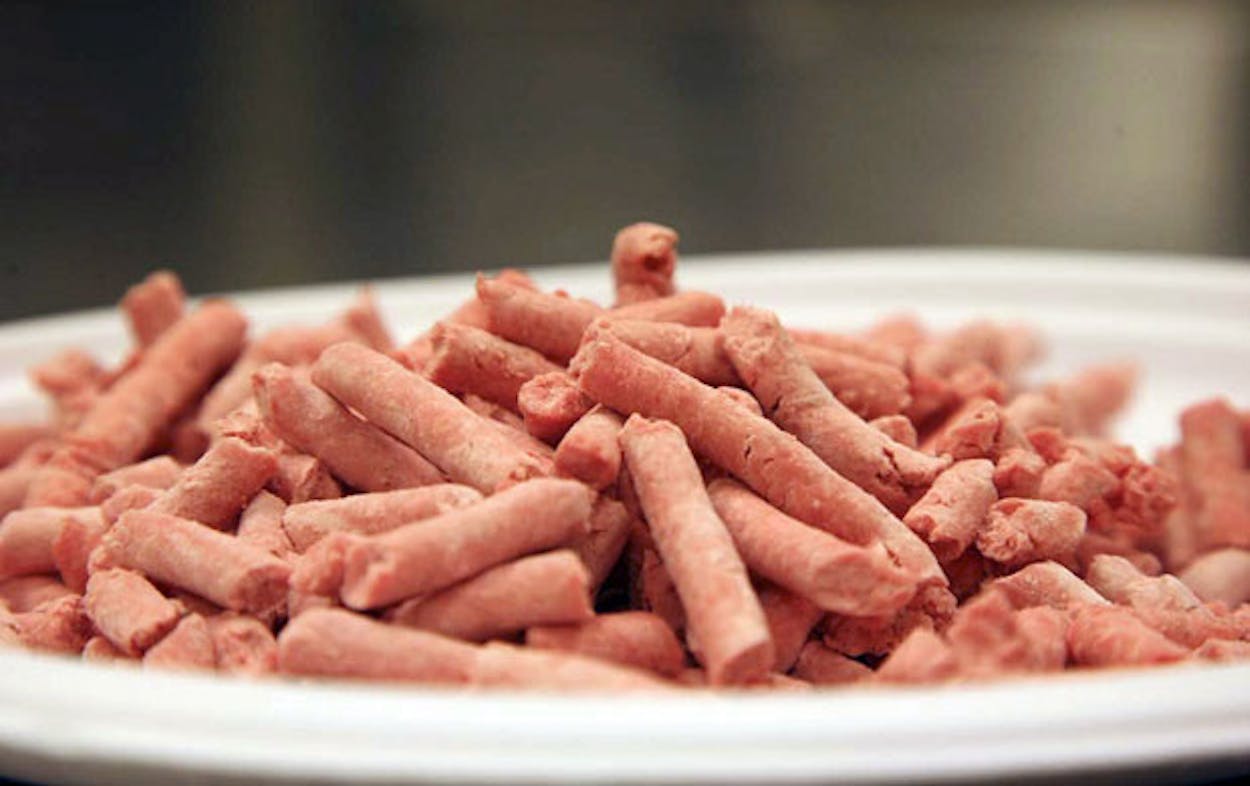On Friday, the machines that churned out pink slime at Beef Products Amarillo plant will go silent as the factory shuts its doors. (The company’s plants in Garden City, Kansas and Waterloo, Iowa will also go dark on Friday, and around two hundred workers from each plant will join the ranks of the unemployed.)
Would the outcry against the meat product been quite as great if it weren’t for its moniker? Candice Choi of the Associated Press reported that Gerald Zirnstein, the former USDA meat inspector who blew the whistle on the meat product, almost dubbed it “pink goo” or “pink paste,” both of which don’t have the same ring to them.
“It’s pink. It’s pasty. And it’s slimy looking. So I called it ‘pink slime,'” Zirnstein said. “It resonates, doesn’t it?”
The Atlantic Wire‘s Eric Randall opined that “pink goo” would also have repulsed consumers, but he termed “pink slime” a “nauseatingly evocative name.”
To make “lean finely textured beef,” the preferred name in the industry for the meat product, companies take beef trimmings, heat them to separate the meat from the fat, and then blend the lean trimmings and treat them with ammonia.
In his syndicated newspaper column, cowboy poet Baxter Black argued that lean finely textured beef had a branding problem from the start: “Pink slime, as you have heard, is lean beef that has been separated from fat and is added back to hamburger to make it leaner. It is puffed with ammonia gas to eliminate bacteria. They could have chosen to call it lean beef crystals, beeffulls, red stripes, lean beef sprinkles or recycled fresh beef calorie reducers. But they didn’t, so unwittingly, they became targets.”







